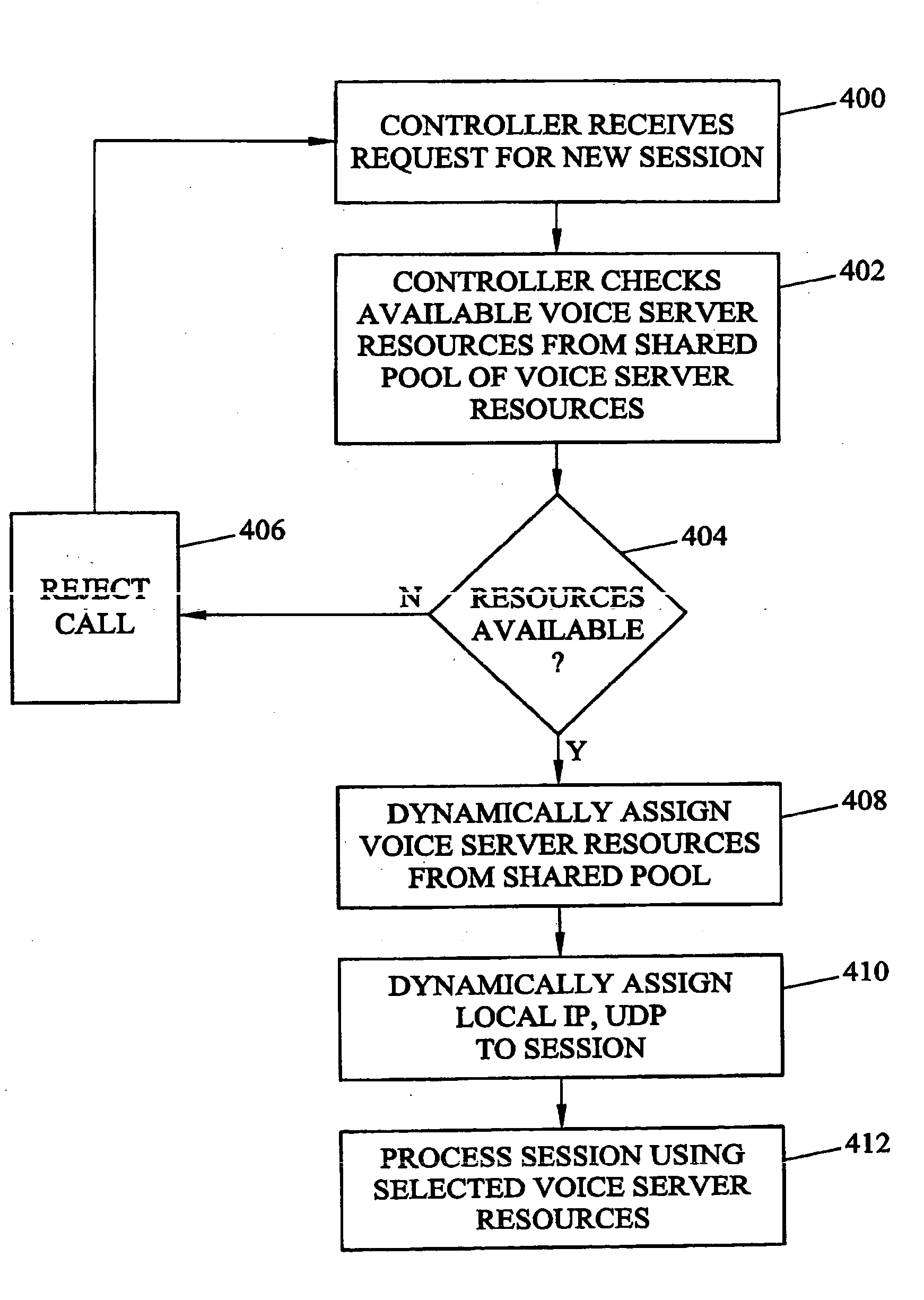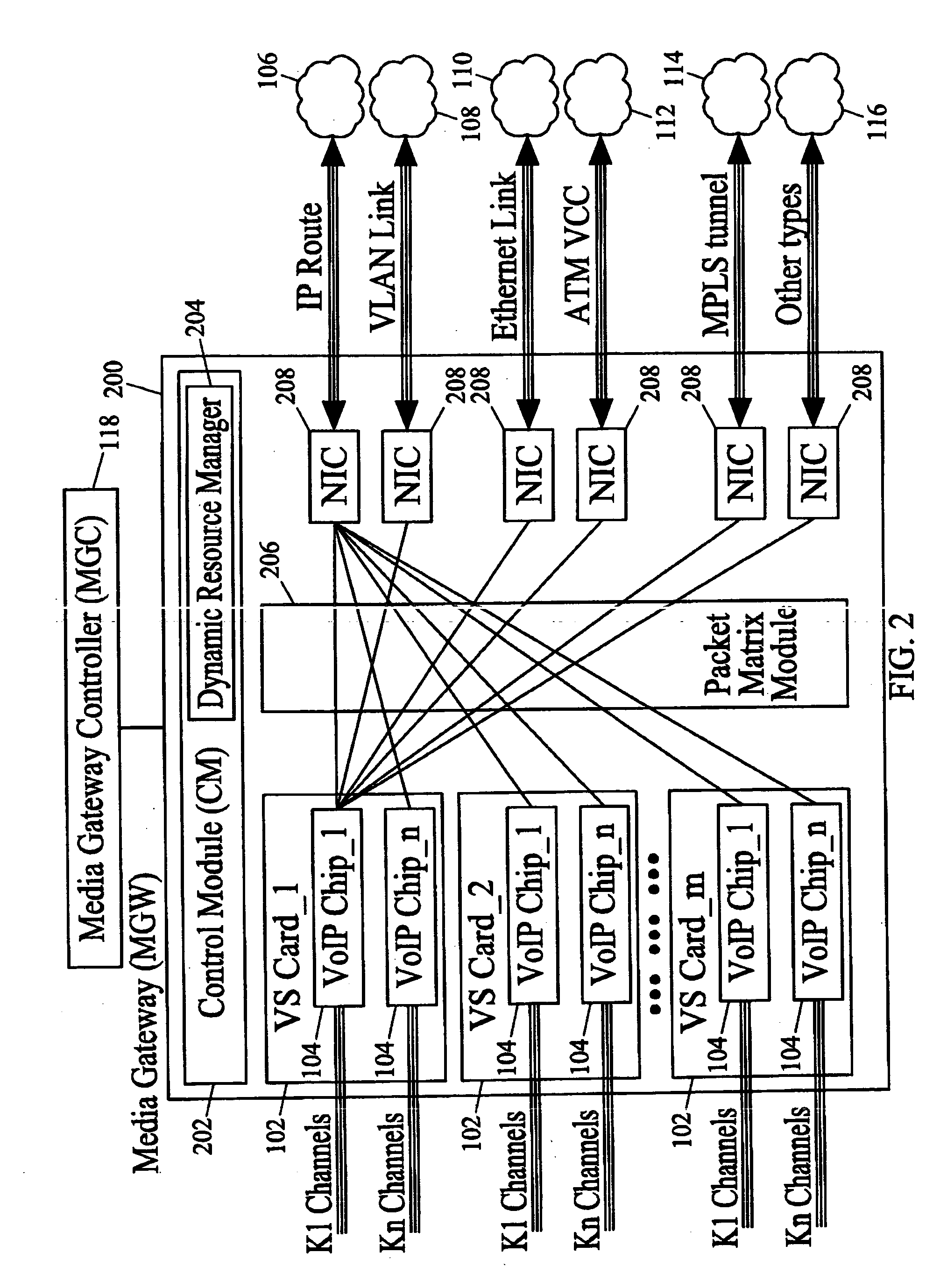Methods and systems for per-session dynamic management of media gateway resources
a media gateway and resource technology, applied in the field of methods and systems for per-session dynamic management of media gateway resources, can solve the problems of labor-intensive and labor-intensive reallocation of static resource resources, unsuitable dynamically changing network environment, etc., and achieve the effect of efficient allocation and interconnection
- Summary
- Abstract
- Description
- Claims
- Application Information
AI Technical Summary
Benefits of technology
Problems solved by technology
Method used
Image
Examples
Embodiment Construction
[0025]FIG. 2 illustrates an example of a media gateway including a dynamic resource manager according to an embodiment of the present invention. Referring to FIG. 2, media gateway 200 includes a dynamic resource manager 204 for dynamically allocating voice server resources. Dynamic resource manager 204 may be implemented in hardware, software, firmware, or any combination thereof as part of a control module 202 within media gateway 200.
[0026] In FIG. 2, a packet matrix module 206 provides provisioned internal data-paths between the network interface cards 208 and every voice chip 104. For clarity, the full mesh between voice chips 104 and NICs 208 is not shown. It is understood that packet matrix module 206 may provide paths such that each voice chip 104 is reachable from each NIC 208 and vice-versa.
[0027] Each of the data paths between voice chips 104 and NICs 208 may be individually provisioned based on total bandwidth, scheduling algorithm, and traffic management policy, etc. A...
PUM
 Login to View More
Login to View More Abstract
Description
Claims
Application Information
 Login to View More
Login to View More - R&D
- Intellectual Property
- Life Sciences
- Materials
- Tech Scout
- Unparalleled Data Quality
- Higher Quality Content
- 60% Fewer Hallucinations
Browse by: Latest US Patents, China's latest patents, Technical Efficacy Thesaurus, Application Domain, Technology Topic, Popular Technical Reports.
© 2025 PatSnap. All rights reserved.Legal|Privacy policy|Modern Slavery Act Transparency Statement|Sitemap|About US| Contact US: help@patsnap.com



